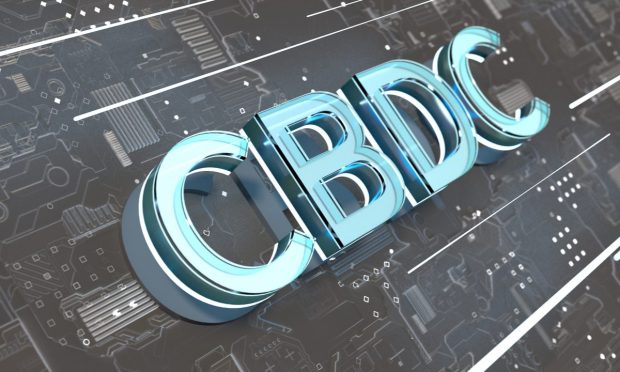CBDCs Give Central Bankers Control When Cash Isn’t King Anymore

Much has been made of the need for a digital dollar as a way of reinforcing the U.S. dollar’s role as the world’s reserve currency, making payments faster and cheaper, and bringing the unbanked into the system.
But one of the biggest drivers of the debate to at least study, if not test or launch, central bank digital currencies (CBDCs) is to fight off privately issued stablecoins.
The discussion revolves around the power of the cash supply, and the tools it gives the Fed Reserve and all other central banks to control the economy by managing inflation and fighting off economic downturns.
And the use of cash is falling.
“Digital payments, made with the swipe of a card or a few taps on a cellphone, are fast becoming the norm,” opined Brookings Institute senior fellow Eswar Prasad in The New York Times last year. “The end of cash is on the horizon, and it will have far-reaching effects on the economy, finance and society more broadly.”
Central banks are experimenting with CBDCs in order “to keep their money relevant,” as private payments by card, mobile wallets and the small-but-growing-fast virtual currencies like bitcoin take over, he said.
According to PYMNTS’ November 2021 Digital Economy Payments report, just 13.4% of surveyed consumers used physical cash, compared to nearly 70% using credit and debit cards. PayPal got 5% and Apple Pay 6%. Shoppers also turned to other methods, ranging from store cards to cryptocurrency.
Get the free report: Digital Economy Payments: How Consumers Pay in the Digital World
Sweden, always ahead of the curve on taking payment digital, now makes 1% of its transactions with physical currency, but in the EU at large, cash remains a major means of payment. The European Central Bank (ECB) said that as of late 2020, nearly half of all point-of-sale transactions and more than half of person-to-person transactions were made in cash. The numbers were far higher when measuring by the number of transactions.
Despite that, the ECB said cash payments in the EU are falling. Even so, the demand for banknotes is growing, the report said, calling the phenomenon the “paradox of banknotes.” It attributed that to people inside and outside the European Union holding euros as a store of value.
So What?
Why does it matter if the Fed’s dollars, the EU’s euros or China’s yuan renminbi notes are in paper?
Control is definitely a factor.
Go back before June 2019, when Mark Zuckerberg’s Meta, then Facebook, announced plans to launch a new cryptocurrency called Libra. The plans for a stable yet un-pegged private currency was met with a roar of fear and outrage by central bankers, legislators, and financial authorities around the world. It’s not unfair to say that the now-abandoned stablecoin — renamed Diem as opposition grew — put CBDCs on the map.
CBDC in Fiscal Policy
“A central bank digital currency can also be a useful policy tool,” Prasad wrote. “Typically, if the Federal Reserve wants to stimulate consumption and investment, it can cut interest rates and make cheap credit available. But if the economy is cratering and the Fed has already cut the short-term interest rate it controls to near zero, its options are limited.”
With a CBDC, he said the Fed could “impose a negative interest rate by gradually shrinking the electronic balances in everyone’s digital currency accounts, creating an incentive for consumers to spend and for companies to invest,” he added.
They would, or at least could, give the Fed direct access to people’s accounts — something the banking lobby made clear it considers an existential threat earlier this week in comments made on the Fed’s stablecoin report.
“CBDCs present serious risks to financial stability and may provide few, if any, benefits,” according to the Bank Policy Institute (BPI). But a digital dollar would “undermine the commercial banking system in the United States and severely constrict the availability of credit to the economy.”
That’s especially the case in downturns, when people may be more likely to deposit their money in CBDC accounts. Should that happen, it would be a direct liability on the central bank, the American Banking Association said. That would move money from depository accounts, from which banks can make loans, to Fed-controlled CBDC accounts, from which they cannot.
And stablecoins have come in for plenty of abuse, especially after the terraUSD lost its peg, suffered a run, and destroyed about $45 billion in a few days.
See this: TerraUSD’s Price Collapse Shows Vulnerability of Dollar-Pegged Cryptos
But while there is a debate about how to control stablecoins, the Biden administration’s policy is to ensure they are issued only by federally insured banks. That would give those banks a measure of control and still keep them under the government’s control.
More here: FDIC Chair Calls Stablecoins a Top Concern as NY Fed Calls Them Unnecessary
